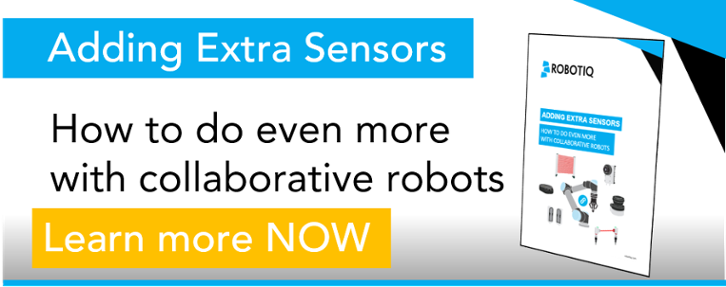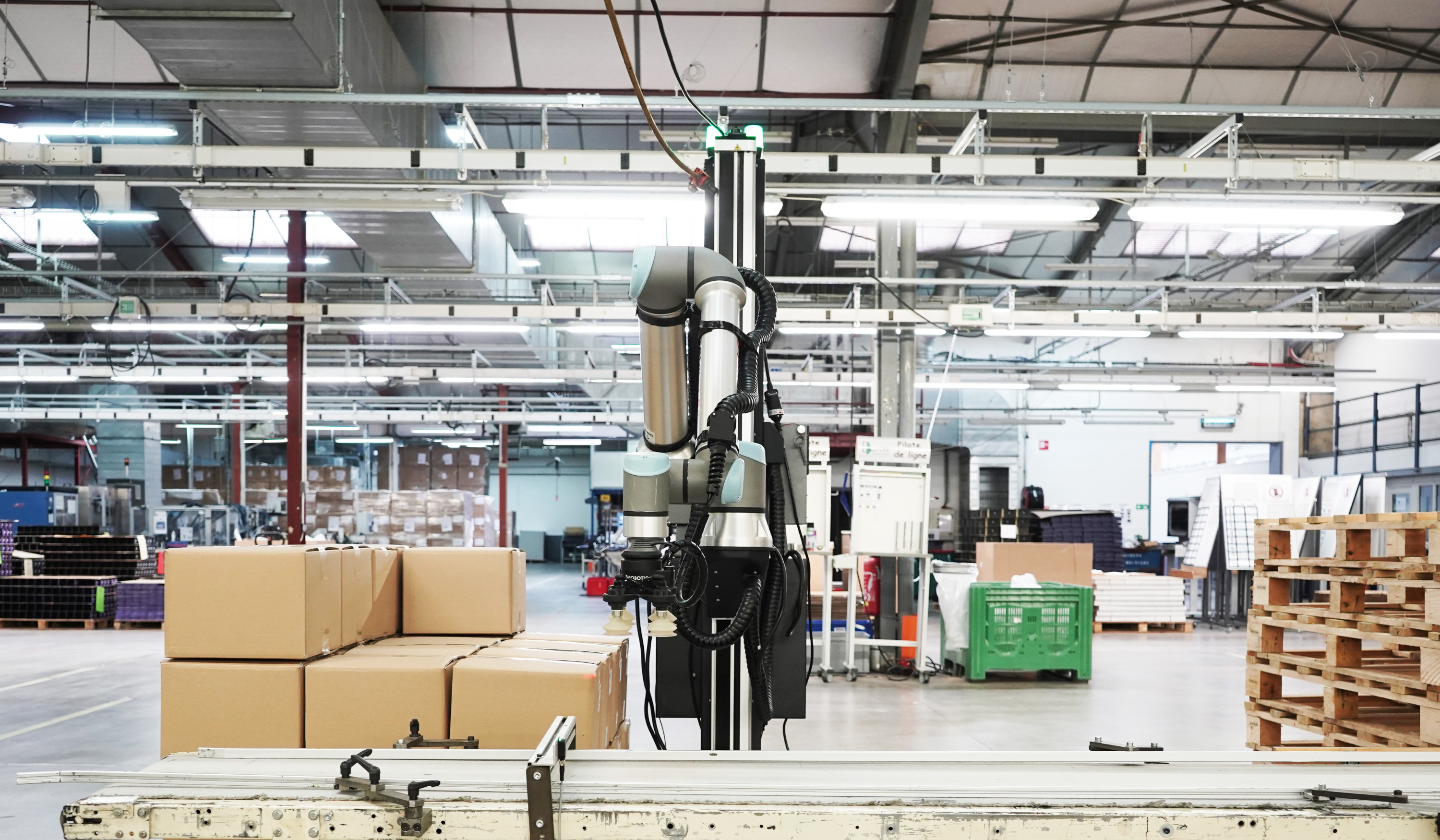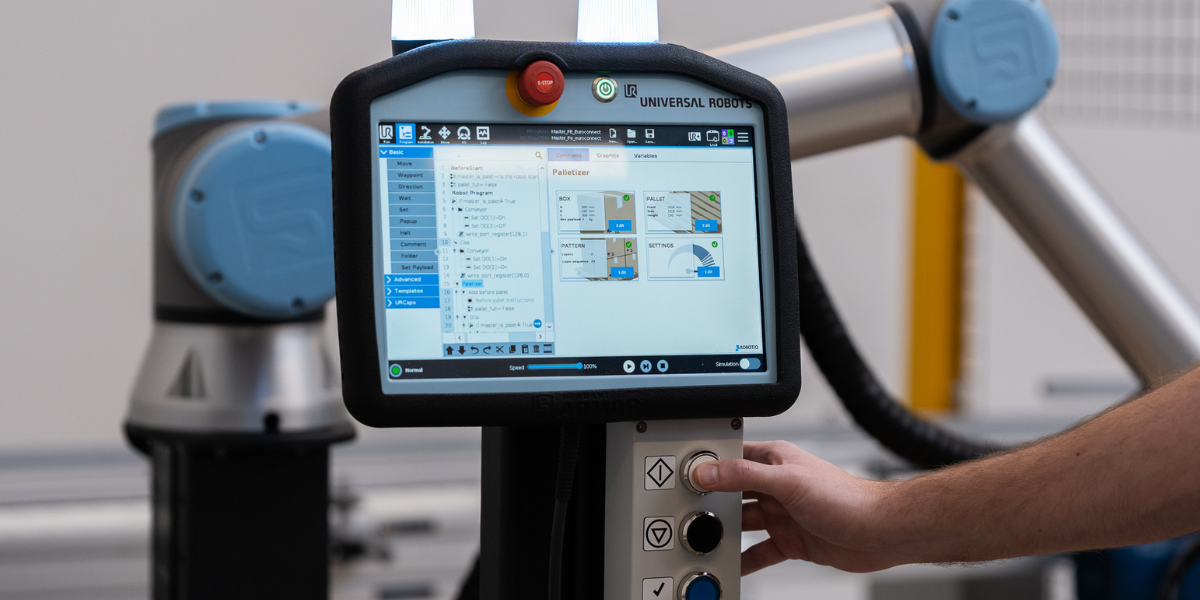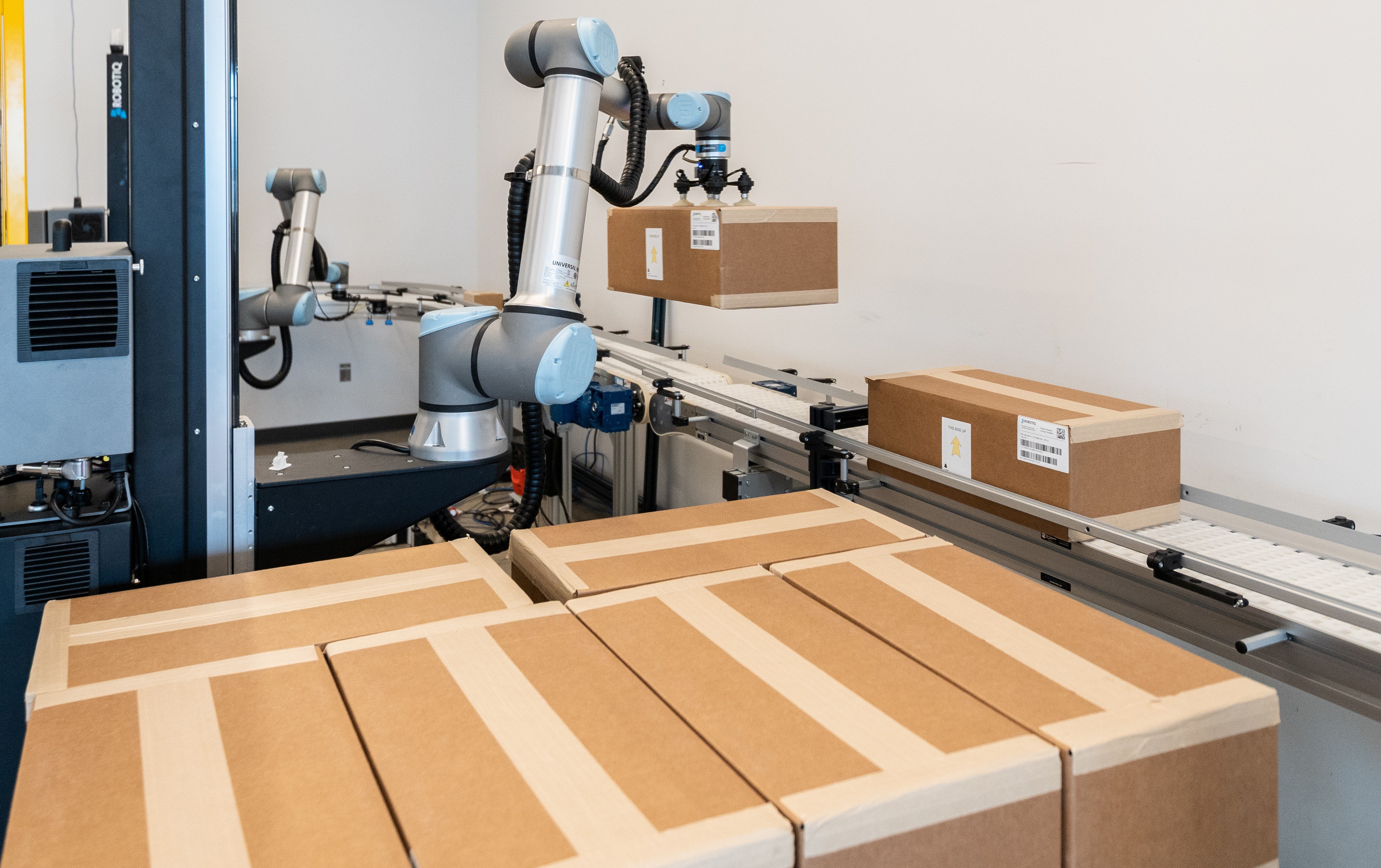Three Sensors for a More Adaptable Robot

Posted on Sep 06, 2016 7:00 AM. 6 min read time
You know you can get much more out of your robot if you add some extra sensors. But, which sensors should you choose? We look at the various benefits of added sensing using the example of a welding robot.
All robots depend on sensors to detect the world. Welding robots are no different, despite the fact that they are traditionally programmed to follow fixed paths. Like many robots, adding even a simple extra sensor can add huge flexibility to your welding robot. Sensors allow you to improve the accuracy, efficiency and safety of your robotic setup, depending which sensor you choose.
Here at Robotiq, we've been looking at how sensors can improve the flexibility of collaborative robots. We've written it all into an eBook, we published. However, collaborative robots are not the only robots which benefit from extra sensors. Welding robots can also benefit greatly from additional sensing.
In this post, we give some examples of how adding sensors to a welding robot can improve your process in various ways. You can find examples of arc welding robots in our downloadable comparative chart.

Does Your Robot Lack Flexibility?
In general, all sensors make a robot more flexible, but different sensing can improve the robot's operation in different ways. Welding is an application which demonstrates this quite clearly. In this example, we'll primarily look at arc welding, which involves welding two pieces of metal together using an electric arc. However, most of the sensors we'll talk about are applicable to other welding options and robotic tasks, including soldering, gluing and metalworking.
The task of arc welding requires that the robot must trace a path along a line whilst maintaining a certain distance from the material. The basic way to use a robot for this is to program it point-by-point using a teach pendant, which is generally reliable and effective. However, this approach introduces a few challenges into the operation of the robot, including that:
- It makes programming quite a long process, as the robot must be driven from point to point using the teach pendant.
- It means that the robot is only able to operate on parts which are placed in exactly the same position as when it was programmed. If a part moves, there may be inaccuracies in the weld line or burrs may be missed.
- If the parts have been assembled incorrectly, it will weld them anyway and may produce nonconformities as the robot can't detect if the gap between parts are too large.
Another challenge of using robots for welding is that you have to fence off the robot from the rest of the workplace, which uses up a lot of space and means you have to turn off the robot every time you need to go near it. There are various ways you could overcome all of these challenges by adding sensors.
Three Sensors for a More Adaptable Robot
There are often multiple ways to solve a robotic limitation by using sensors. Here we will look at the impact of three different sensor types on some of the challenges we've just introduced.
- Force sensors
- Safety sensors
- Seam finding sensors
There are also many other sensing options which you could apply to a robot.
Force Sensors
Adding a force sensor (such as the FT300) to the end of the robot arm will open up the possibility to perform tasks which require information about interaction forces. Two of such tasks are:
- Hand Guiding – Hand guiding allows you to program the robot by holding the end effector and physically moving it around by hand. The force sensor detects the forces which you apply and the robot moves as a response to this force. One example of a hand guiding product is Robotiq's Kinetiq Teaching. As you can see in this video, it allows you to program the robot much more quickly and intuitively than with a teach pendant alone.
- Force Control – Force control allows you specify the interaction forces that the robot applies onto the parts. The robot will apply a constant force rather than simply following a pre-programmed path. This is particularly beneficial for other types of welding, such as spin welding and stir welding. The force data ensures the weld remains constant.
Safety Sensors
Safety sensing can benefit any type of industrial or collaborative robot. There are a variety of different safety sensors, which we cover in more detail in this eBook. This article from the Fabricator and Manufacturer's Association also provides a useful introduction to safety equipment for robotic welding.
The most common use of a safety sensor is to halt the robot as soon as somebody enters the workspace. This is a requirement when working with welding robots to avoid injury. Safety sensors are much less intrusive than traditional fencing and allow very flexible ways to ensure safe zones. By using sensors and calculating distance separation, you can even use industrial robots for collaborative applications, as demonstrated in our eBook on collaborative robot risk assessment. Two popular examples of safety sensors are:
- Light Curtains - These are a very popular option. They allow you to section off the robot's workspace, either all of it or part of it, using a curtain of infrared light beams. When a human worker passes through the light curtain, the robot can be programmed to respond in an appropriate way, e.g. by stopping or slowing down.
- Safety Mats - These pressure sensitive mats are laid on the floor of a restricted zone and detect when someone stands on them. They are not as easy to reposition as light curtains but are more robust to blind spots in the workspace.
Seam Finding Sensors for Arc Welding
This final sensor category is particular to arc welding, but incorporates many of the technologies you can find in many other types of robot sensor, including: photoelectric technology; 2D and 3D robot vision; inductive and capacitive sensing; and laser distance sensors.
Seam finding sensors can be useful for arc welding because they allow the robot to detect the join between two pieces of material. This improves the quality of the weld and makes it robust to part inaccuracies.
The diverse range of seam finding sensors demonstrate a very important lesson to consider when looking for sensors for your robot - Don’t limit your search to only one sensor technology just because it is typically used for a particular task. There are likely to be several technologies which could provide workable solutions to your problem, each with their own benefits and challenges. For example, three possibilities of seam finding sensor are:
- Touch sensing with a wire – A wire is passed through the gap and it detects the contact between the two pieces of metal to be joined. This is cheap and easy, but is slower than other options and requires you to cut the wire after welding.
- 2D Vision sensing – A camera is used to detect and track the seam. This is quicker and more flexible than touch sensing, but is more expensive and is sensitive to lighting.
- Laser tracking – A laser sensor is used to scan the material surface, to detect and track the seam. It is very fast and accurate, but is even more expensive and may not be suitable for reflective materials.
There are also other sensing technologies, each with their own benefits and challenges. See this data sheet from Yakasawa, which serves as a good introduction to some of the available technology.
Which Sensor to Choose?
Hopefully these examples have helped you to start thinking about what possibilities there might be for adding sensors to your own robotic welding application. As you can see, the flexibility provided by sensors can be quite different depending on which sensor you choose.
Have you had success adding sensors to a welding robot? Which sensors do you think are the most beneficial? How could the sensors listed in this article improve your robot application? Tell us in the comments below or join the discussion on LinkedIn, Twitter or Facebook.







Leave a comment